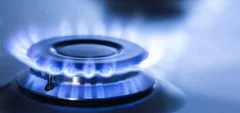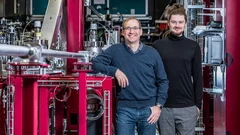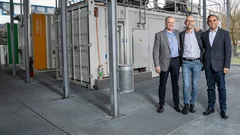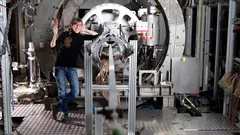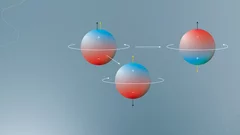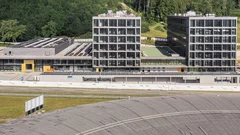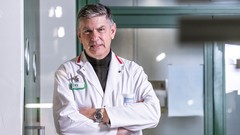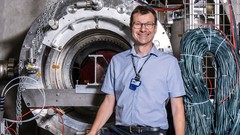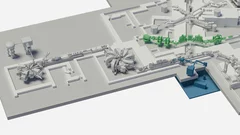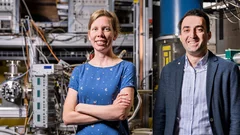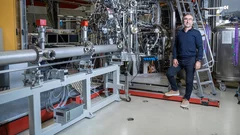Archive
How can we secure our gas supply?
Switzerland depends entirely on foreign gas imports. How can we escape from this dependence and guarantee our gas supply? Synthetic methane might be a solution.
Music at PSI
Sometimes musicians drown out the technical background noise at PSI.
Using light to switch drugs on and off
PSI researchers record a molecular film of a cancer drug fitted with a photoswitch. This opens new insights for drug developers.
A greener alternative for aviation fuel
Air travel with no carbon footprint – PSI and the Metafuels AG develop a new technology to produce sustainable aviation fuel.
High-tech company VDL ETG: PSI’s new neighbour
The Dutch company VDL ETG has signed a rental agreement with Park Innovaare.
Encouraging equal opportunities in research
International Day of Women and Girls in Science: To celebrate the day, we present five outstanding women working in science at PSI.
More light in the darkness
At PSI, researchers want to fill the missing gaps in the Standard Model of particle physics with the help of the large research facilities.
Swiss PIC to support Swiss photonics industry
The technology transfer centre Swiss PIC will be located in the Park Innovaare.
The best of both worlds
Annalisa Manera works as a nuclear researcher at PSI and as a professor at ETH Zurich. A portrait.
Energy efficiency in times of potential power shortages
How PSI is continuously improving the energy efficiency of its own infrastructure and large research facilities
Further optimising car brakes
Research scientists at PSI and ANAXAM use neutrons to look inside brake callipers and identify potential ways of reducing CO2 emissions.
Radionuclides for personalised medicine
TATTOOS is part of the upgrade project IMPACT. Roger Schibli explains its importance for the future of cancer treatment.
“A jewel we must treasure”
HIMB is one of the two parts of the upgrade project IMPACT. Klaus Kirch speaks about the plans.
A two-part upgrade for the proton accelerator
A two-part upgrade is planned for HIPA starting in 2025. Preparations are already under way.
3.1 million in funding for new research projects at PSI
The PSI scientists Zurab Guguchia and Kirsten Schnorr are to receive grants totalling CHF 3.1 million from the Swiss National Science Foundation for ground-breaking projects.
Preparing for energy shortages and blackouts
Peter Burgherr is a risk researcher at PSI. In this interview he talks about possible power shortages in the coming winter and how to prepare for them.
New materials for the computer of the future
Researchers are identifying and studying material compounds whose unique properties could lead to the development of novel types of chip.
Energy security
How can Switzerland achieve the energy transition? PSI researchers provide answers with a unique computer model.
Of fusion reactors, fuel cells, and tin cans
The technology transfer centre ANAXAM has been facilitating access to the material analytics at PSI.
“More objectivity would be helpful”
The current energy debate could do with more facts and less gut feeling – argue Thomas J. Schmidt, renewables expert, and Andreas Pautz, nuclear energy specialist.
